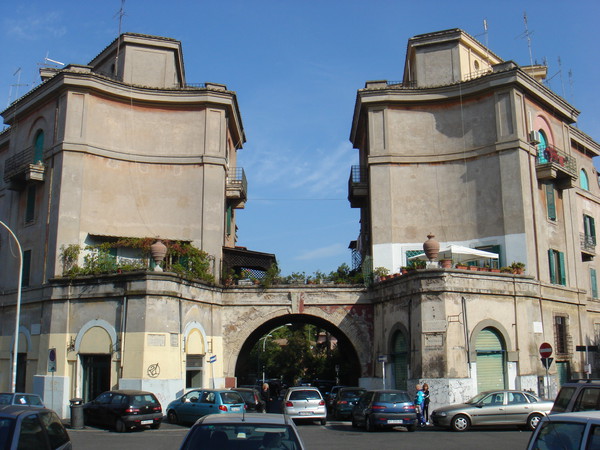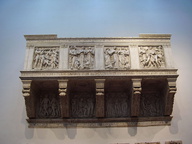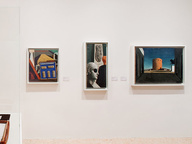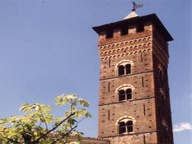Garbatella
Appia Antica, Aventino, Ostiense

- Location: Garbatella
- Address: Via delle Sette Chiese
- Transportation: Metro: line B, station Garbatella
- Visit lasts: 1 hour (about)
- Services:



Starting in 1920 the Roman Institute for Popular Housing entrusted the architects Gustavo Giovannoni and Marcello Piacentini with the project of building a new neighborhood on the hills in front of the Basilica di San Paolo Fuori le Mura. The idea was developed following european tendencies, particularly that of the English Garden Cities, urban neighborhoods outside the city center, mostly host to the working classes. Thus, the characteristic lots that make up the nucleus of this neighborhood with its buildings built facing inerior courtyards rich with green.
THINGS TO KNOW: Mahatma Gandhi was brought through the neighborhood (“rione” is the word used often in Rome) during his visit to Rome on 13 December 1931. There are still photos and film footage of his “little walk”.
The cinema has often used the Garbatella as a backdrop with it appearing in, among others, Caro Diario (Nanni Moretti, 1993), Romanzo Criminale (Michele Placido, 2005) and, recently, it was selected as the setting for a popular T.V. series, I Cesaroni, for which it has become a destination of pilgrimage for its fans.
There are still doubts about how the neighborhood (rione) got its name: according to some it got its name from a pretty young woman who worked in an osteria in the area; according to others it refers to the pleasantness of the area; and according to others still, it is a result of the cultivation of grapes “a barbata” or “a garbata” in the area during the 1800s.
The cinema has often used the Garbatella as a backdrop with it appearing in, among others, Caro Diario (Nanni Moretti, 1993), Romanzo Criminale (Michele Placido, 2005) and, recently, it was selected as the setting for a popular T.V. series, I Cesaroni, for which it has become a destination of pilgrimage for its fans.
There are still doubts about how the neighborhood (rione) got its name: according to some it got its name from a pretty young woman who worked in an osteria in the area; according to others it refers to the pleasantness of the area; and according to others still, it is a result of the cultivation of grapes “a barbata” or “a garbata” in the area during the 1800s.



